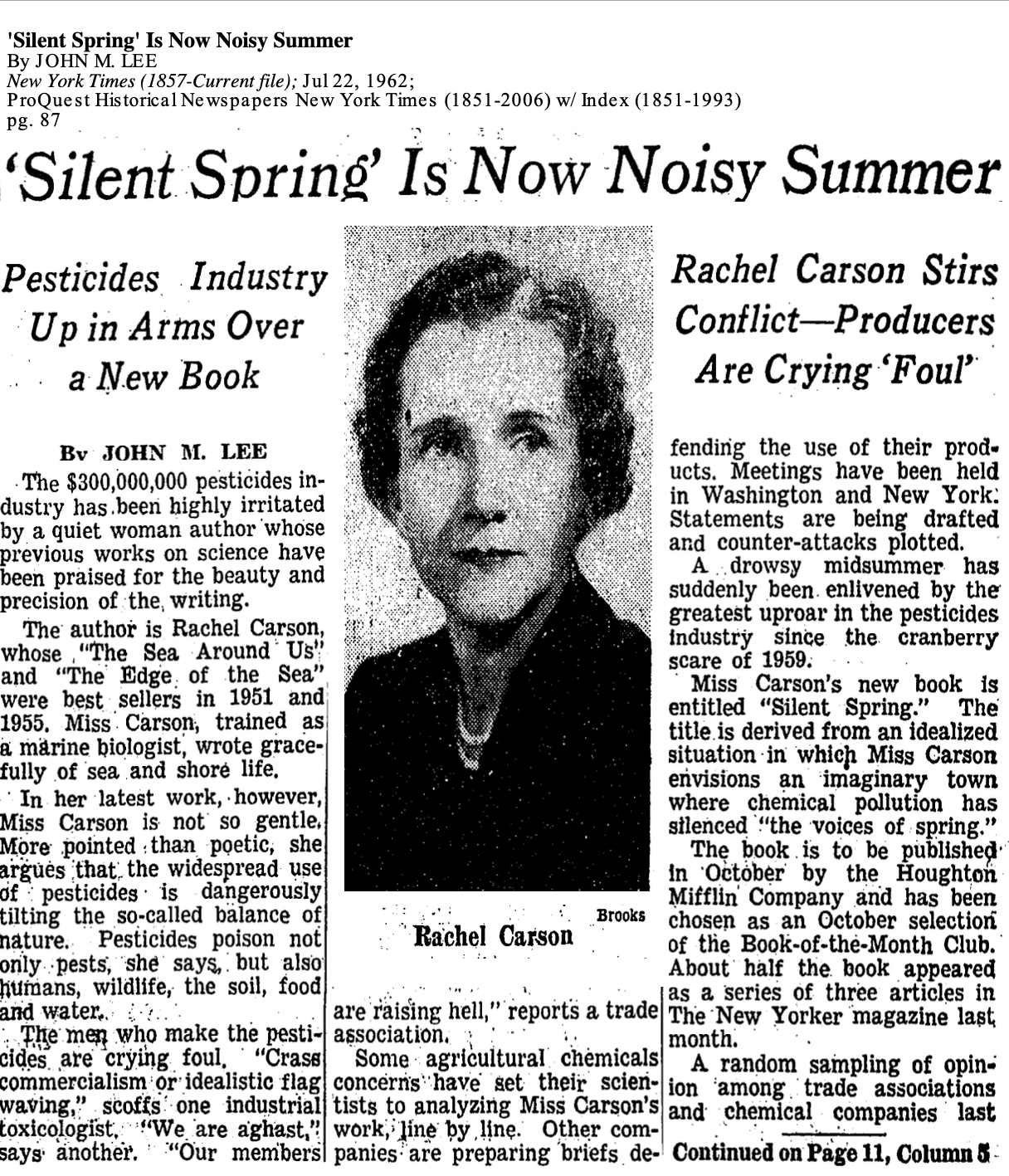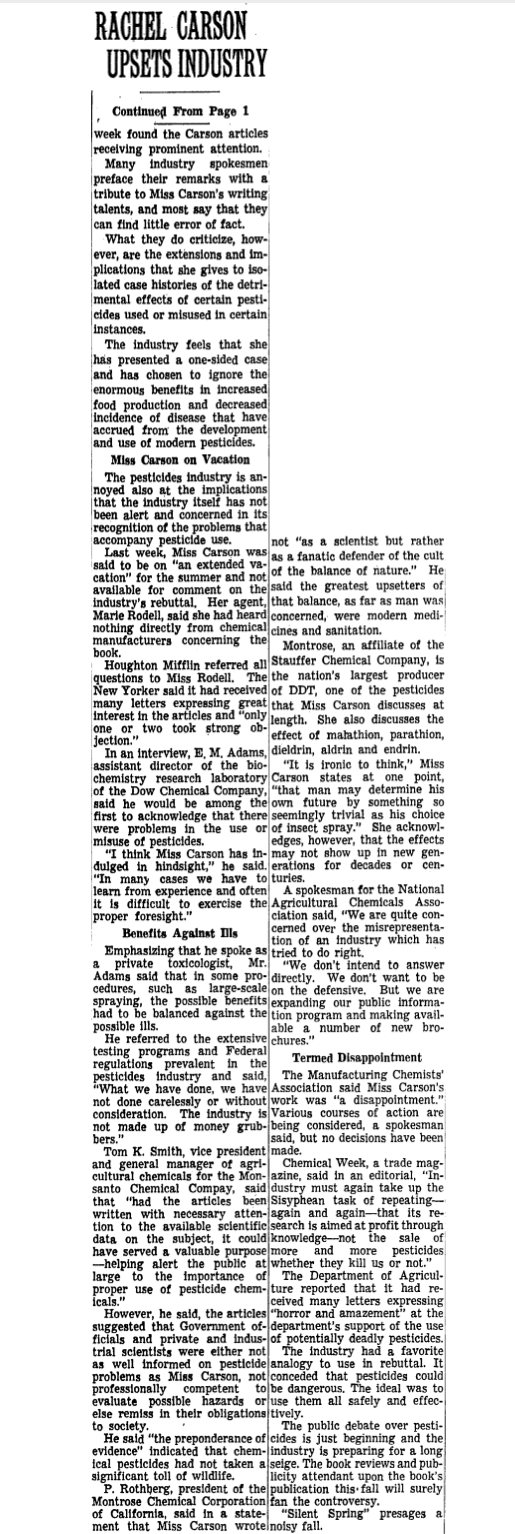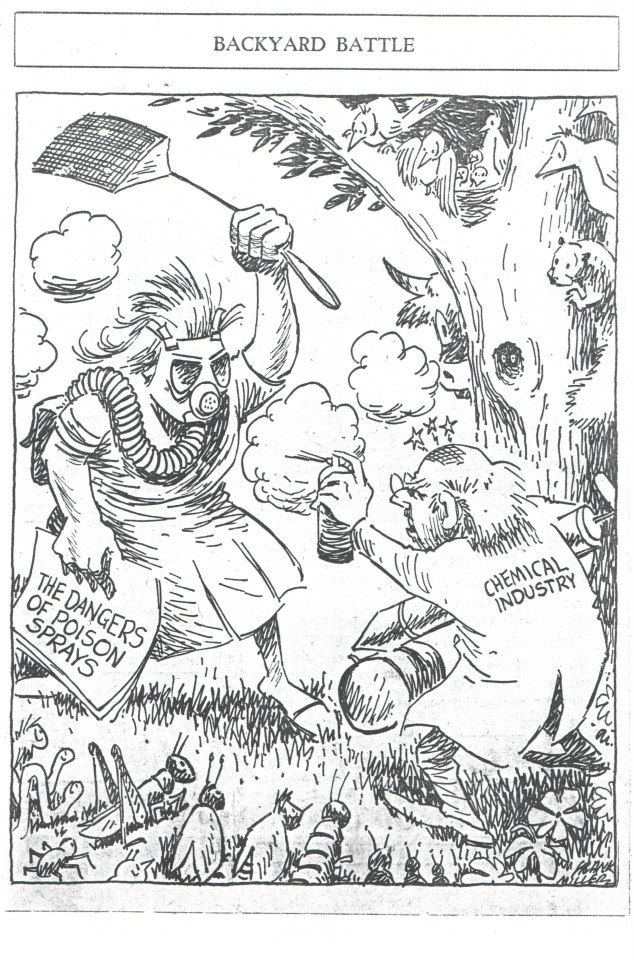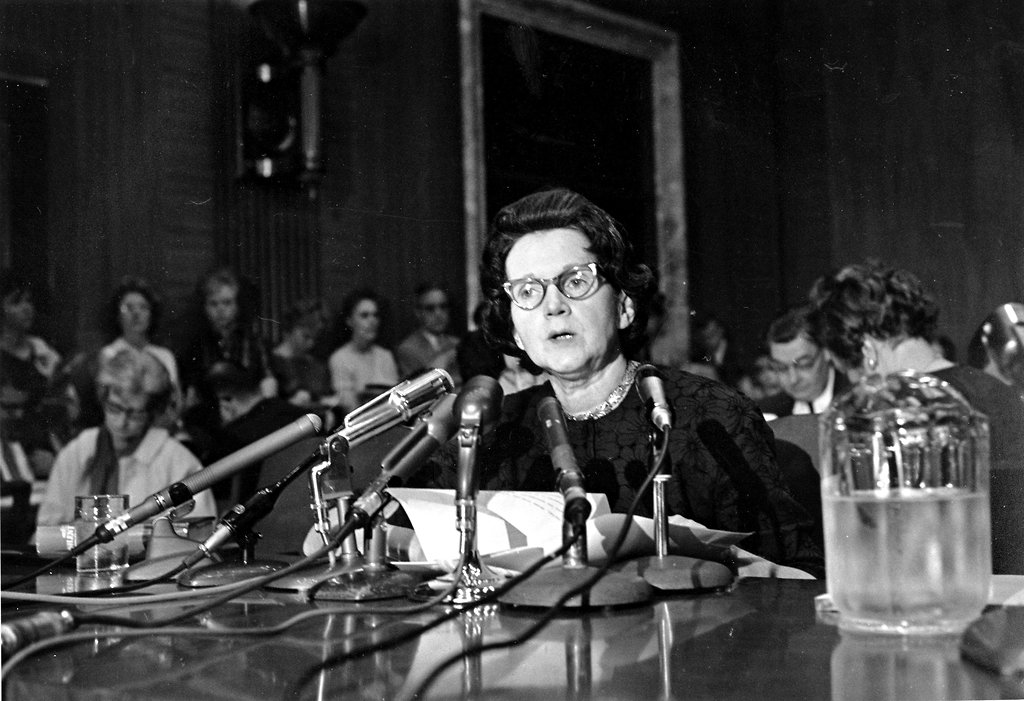
John M. Lee, "'Silent Spring' is Now Noisy Summer", New York Times, 22 July 1962.

Chemical Industry Threatened
Chemical companies had a lot to lose from Silent Spring alarms. They had sold synthetic chemicals to the public without fully testing them. Rachel Carson gave evidence of DDT as a toxic pesticide with long lasting impacts on wildlife humans. They were threatened and out to discredit her.

John M. Lee, "'Silent Spring' is Now Noisy Summer", New York Times, 22 July 1962.

“When Silent Spring was at last published in book form on September 27, 1962, the chemical industry went ballistic... The association warned that factory shutdowns would mean thousands of lost jobs."
~ Douglas Brinkley, AUDOBON Magazine, May-June 2012
Click PLAY in the box above to hear excerpt of Chemical Industry Spokesman Robert White-Stevens (of pesticide manufacturer American Cyanamid) aired on "CBS Reports: The Silent Spring of Rachel Carson" by Jay L. McMullen, 3 Apr 1963

"Backyard Battle" Editorial cartoon. Des Moines Register, undated. The Linda Lear Collection of Rachel Carson, Linda Lear Center for Special Collections and Archives.
"The chemical industry undertook an expensive negative P.R. campaign, which included circulating ‘The Desolate Year,’ a parody of ‘A Fable for Tomorrow’ that mocked its woeful tone. The parody, which was sent out to newspapers around the country along with a five-page fact sheet, argued that without pesticides, America would be overrun by insects and Americans would not be able to grow enough food to survive.
The personal attacks against Carson were stunning. She was accused of being a communist sympathizer and dismissed as a spinster with an affinity for cats. In one threatening letter to Houghton Mifflin, Velsicol’s general counsel insinuated that there were “sinister influences” in Carson’s work: she was some kind of agricultural propagandist in the employ of the Soviet Union, he implied, and her intention was to reduce Western countries’ ability to produce food, to achieve ‘east-curtain parity.’”
~ Eliza Griswold, The New York Times Magazine, September 2012
The public was very concerned that the US Government and businesses exposed them to poisons without their knowledge. Congress invited Carson to testify.
"The contamination of the environment with harmful substances is one of the major problems of modern life. The world of air and water and soil supports not only the hundreds of thousands of species of animals and plants, it supports man himself. In the past we have often chosen to ignore this fact. Now we are receiving sharp reminders that our heedless and destructive acts enter into the vast cycles of the earth and in time return to bring hazard to ourselves... Contamination of various kinds has now invaded all of the physical environment that supports us — water, soil, air, and vegetation."
~ Rachel Carson testifying before US Senate on June 4, 1963

Rachel Carson testifying before US Senate on 4 June 1963, Unknown photographer, 1963 ddp images
Finally, Carson's hard work paid off. After President Kennedy's Science Advisory Committee issued its report, a path for change was set in motion.
“'Until the publication of Silent Spring by Rachel Carson, people were generally unaware of the toxicity of pesticides,' the PSAC report stated. 'The Government should present this information to the public in a way that will make it aware of the dangers while recognizing the value of pesticides.' The angry public led to public interest groups being formed and an independent body, the US Environmental Protection Agency was established at a level equal to a Department, to provide a voice for the environment. Silent Spring presents a view of nature compromised by synthetic pesticides, especially DDT. Once these pesticides entered the biosphere, Carson argued, they not only killed bugs but also made their way up the food chain to threaten bird and fish populations and could eventually sicken children. “
~ Eliza Griswold, The New York Times Magazine, September 2012